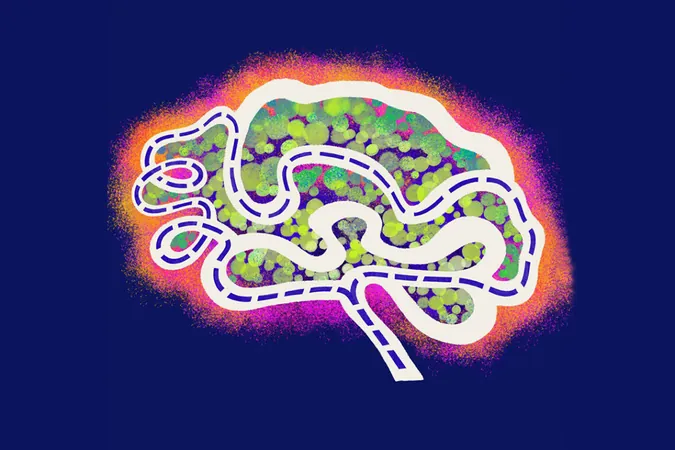
Unlocking the Brain's Mystery: Neurons Change Even in Familiar Settings!
2025-07-23
Author: Ming
Revolutionary Study Unveils Dynamic Nature of Memory in Mice
A groundbreaking study from neurobiologists at Northwestern University and the University of Illinois Urbana-Champaign has revealed a stunning truth about how our brains function. Even when navigating the same familiar paths, the brain's internal GPS is anything but static.
Researchers found that every time mice travel through a well-known environment—even when all external conditions remain unchanged—different "map-making" neurons are activated with each journey. This discovery sheds light on the intricate processes behind memory and spatial navigation, holding significant implications for our understanding of learning and aging.
The Fluid Nature of Memory
Daniel Dombeck, a neurobiology professor and senior author of the study, stated, "Our findings reveal that spatial memories are not fixed entities. They evolve continuously within the brain, with different sets of neurons linking to the same memory under different circumstances." This could change the way we perceive memory storage, moving away from the idea that specific neurons hold singular memories.
The Pioneering Experimental Approach
To investigate this phenomenon, the researchers designed a precise experiment using virtual reality technology. Mice ran through a controlled virtual maze on specialized treadmills, where all sensory inputs—including sight and smell—were meticulously managed to create identical conditions for each run. This groundbreaking method eliminated environmental variances that could influence learning.
The results were eye-opening: even in this controlled digital world, distinct groups of neurons were activated on different runs, confirming that the brain's spatial maps are inherently dynamic rather than static.
A New Perspective on Memory and Aging
The study's co-first author, Jason Climer, pointed out the significance of these findings, stating, "This suggests that our memories are fluid and adaptable, possibly explaining why human brains excel in learning continuously—something artificial intelligence still struggles with." This fluidity may also relate to the natural process of forgetting, an essential aspect that is often overlooked.
Potential Implications for Memory Disorders
Interestingly, the researchers noted that the most excitable neurons—those that were more easily activated—tended to maintain more consistent spatial memories across multiple trials. Understanding the special nature of these neurons could pave the way for new treatments targeting memory dysfunction.
Dombeck noted, "Memory issues are central in disorders like Alzheimer’s and schizophrenia. By grasping how the brain operates concerning memory evolution, we could identify innovative strategies for treatment and understand fundamental cognitive processes better."
Conclusion: A New Era in Neuroscience Research
This revolutionary study, supported by the National Institutes of Health, not only transforms our understanding of memory but also opens doors to new research avenues that may eventually benefit those suffering from memory-related disorders. With scientists like Dombeck leading the charge, the future of neuroscience looks brighter than ever!


 Brasil (PT)
Brasil (PT)
 Canada (EN)
Canada (EN)
 Chile (ES)
Chile (ES)
 Česko (CS)
Česko (CS)
 대한민국 (KO)
대한민국 (KO)
 España (ES)
España (ES)
 France (FR)
France (FR)
 Hong Kong (EN)
Hong Kong (EN)
 Italia (IT)
Italia (IT)
 日本 (JA)
日本 (JA)
 Magyarország (HU)
Magyarország (HU)
 Norge (NO)
Norge (NO)
 Polska (PL)
Polska (PL)
 Schweiz (DE)
Schweiz (DE)
 Singapore (EN)
Singapore (EN)
 Sverige (SV)
Sverige (SV)
 Suomi (FI)
Suomi (FI)
 Türkiye (TR)
Türkiye (TR)
 الإمارات العربية المتحدة (AR)
الإمارات العربية المتحدة (AR)